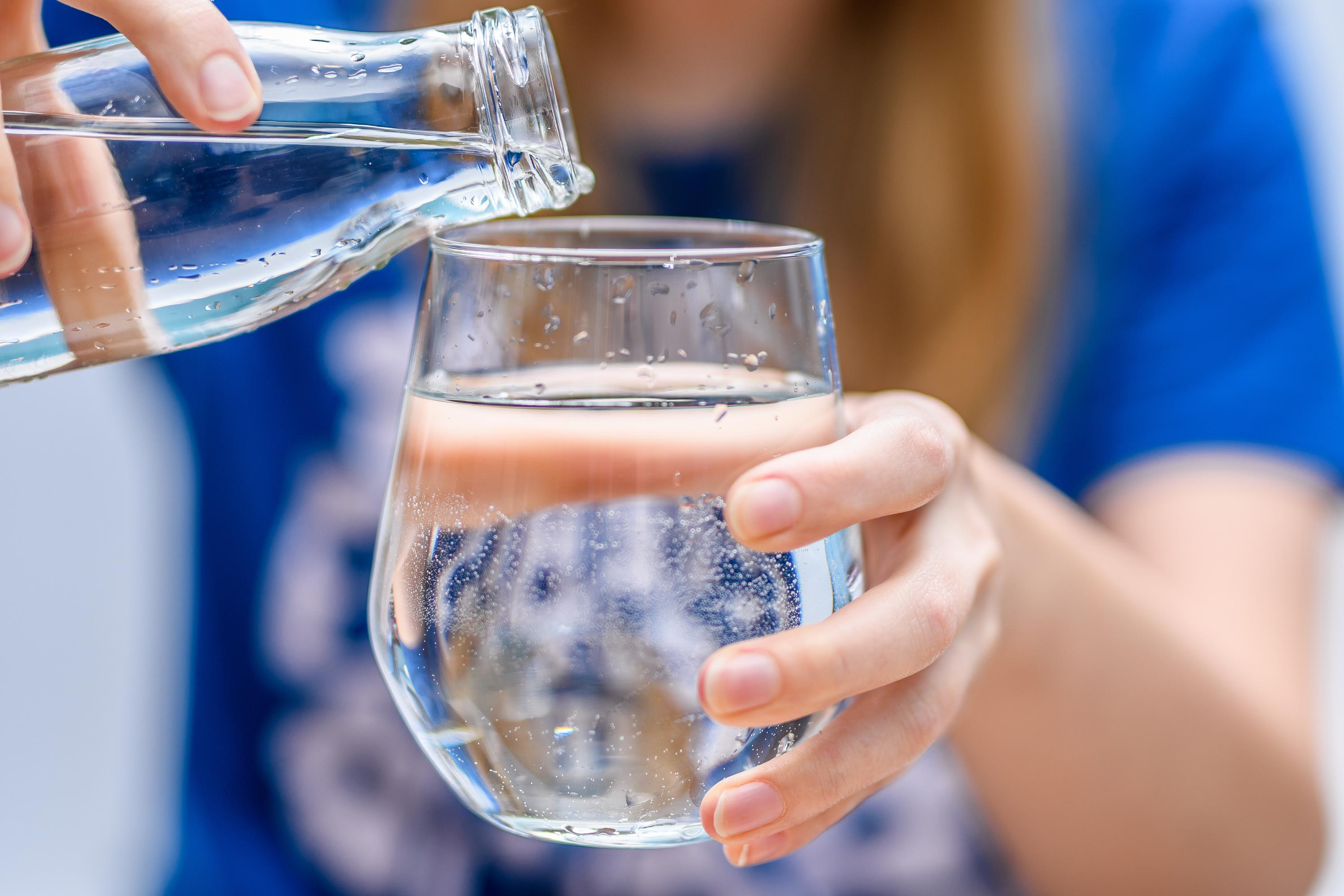Tap water, bottled water... Which is better for your health? Le Figaro takes stock after the recent publication in the press of an investigation into the use of treatments prohibited by several brands of spring and mineral waters.
There are two categories of bottled water: mineral waters, formerly prescribed after a spa treatment and whose physicochemical composition must be stable over time, and spring waters. They are both of underground origin (like two thirds of the tap water distributed in France). “Not all of them have the status of drinking water, because they can contain minerals in large quantities (sodium, fluoride, sulfate and chloride for example), warns Yvan Altchenko, teacher-researcher at AgroParisTech on the Montpellier campus. It is also advisable not to always drink the same bottled water.” Certain waters loaded with mineral salts can, for example, act on the digestive tract. According to the Academy of Medicine, the occasional use of highly sulfated water to treat constipation in children must be prescribed by a doctor.
Taken from water tables often deeper than tap water, natural mineral waters are supposed to be preserved from human contamination. “The exploited resource must be of excellent quality and must not be exposed to risks of alteration or pollution linked to human activities in its supply basin,” specifies the General Directorate of Health (DGS).
Also read: The wave of filtered water threatens the hegemony of bottled water
A principle of purity which has just been called into question by an investigation by Le Monde and France Info revealing, last week, that several brands had violated the regulations: manufacturers used filtration systems and disinfectant treatments which are prohibited in these natural waters deemed microbiologically healthy. Only the reduction of their content of certain undesirable elements (iron and sulfur in particular), and the addition or removal of carbon dioxide, are authorized.
“The treatments used by manufacturers are not harmful as such, they are also used routinely on tap water,” notes Julie Mendret, lecturer at the University of Montpellier. But the fact of using it shows that bottled water is now subject to the same types of pollution as tap water, for example suspended particles, micropollutants or pathogens. Despite the efforts made by manufacturers to protect the deposits (in particular through cooperative actions with farmers), the aquifers are not safe from contamination. And they risk being weakened by climate change, which increases droughts – which limits the dilution effect of pollutants – and episodes of intense rain.
The General Directorate of Health, however, assures that these deposits remain, “by their nature”, “a priori little exposed to risks of deterioration of their quality”. A study carried out in 2013 by the ministry (report published in 2019) showed that 25% of the samples analyzed contained at least a trace of chemical compounds, in particular pesticide residues and bisphenol A, but at concentrations well below the values. boundaries.
Another health risk is highlighted: the presence of plastic microparticles, coming from the degradation of the bottle (particularly in the event of exposure to UV and heat) or from contamination of the natural environment. Nearly 80% of the bottles tested, as part of an experiment carried out in 2022 by the Agir pour l'Environnement association, contained microplastics. The long-term danger to human health is not yet known, but chronic exposure to these plastic fragments is suspected of having a chemical and mechanical impact on the functioning of the cardiovascular, intestinal, neurological, reproductive and respiratory systems.
According to an American study published at the beginning of January, the extent of this plastic pollution is also underestimated. The scientists, who used laser technology to detect nanoplastics (10 to 100 times finer than a hair), counted 240,000 fragments per liter of water on average. To date, no text in France requires the monitoring of microplastics, but they should be soon. Julie Mendret recalls that “the quantity of microplastics is lower in tap water” than in water stored in plastic bottles.
Also read “Eternal pollutants” in tap water: what impact on health?
Tap water is one of the most controlled foods in France. Its monitoring is ensured by regional health agencies as well as by the operators themselves (Veolia, for example). This monitoring is carried out every day in large cities, and less frequently in rural areas. Around 70 parameters are controlled (bacteria, nitrates, arsenic, PFAS, etc.) and their levels must not exceed quality limits.
“Overall, tap water can be drunk without worry everywhere in mainland France,” assures Yves Lévi, pharmacist and professor emeritus of public health at Paris-Saclay University. This does not prevent the occurrence of occasional contaminations which are generally quickly identified. Consumers can check water quality on the Ministry of Health website. It lists the results of health checks, municipality by municipality, as they become available.
Two thirds of tap water production comes from groundwater, which has been filtered by the different layers of sand and rock, and is generally of the best quality. The remaining third comes from surface water (rivers, lakes and dams).
Also readPesticides: does tap water present a health risk?
“What is new, both for tap water and for bottled water,” explains Yves Lévi, “is the detection, thanks to advances in analysis methods over the past twenty years, of previously undetectable chemical compounds. This leads to questions about the need to establish new drinking standards.” According to the latest report from the Ministry of Health on the quality of drinking water, 15% of the French population received, at least once during the year 2022, tap water that did not comply with quality limits. for pesticides. In almost all cases, the exceedances were limited in concentration and/or time. They have not led to a restriction of the use of water for food purposes. The five substances most frequently found were pesticide metabolites, that is to say molecules resulting from their degradation in the environment.
“These excesses do not represent a health danger, provided they are low and of short duration,” reassures the pharmacy professor. According to Julie Mendret, “this should still alert us to the need to protect drinking water by avoiding contamination of the environment”.

 B:SM will break its investment record this year with 62 million euros
B:SM will break its investment record this year with 62 million euros War in Ukraine: when kyiv attacks Russia with inflatable balloons loaded with explosives
War in Ukraine: when kyiv attacks Russia with inflatable balloons loaded with explosives United States: divided on the question of presidential immunity, the Supreme Court offers respite to Trump
United States: divided on the question of presidential immunity, the Supreme Court offers respite to Trump Maurizio Molinari: “the Scurati affair, a European injury”
Maurizio Molinari: “the Scurati affair, a European injury” First three cases of “native” cholera confirmed in Mayotte
First three cases of “native” cholera confirmed in Mayotte Meningitis: compulsory vaccination for babies will be extended in 2025
Meningitis: compulsory vaccination for babies will be extended in 2025 Spain is the country in the European Union with the most overqualified workers for their jobs
Spain is the country in the European Union with the most overqualified workers for their jobs Parvovirus alert, the “fifth disease” of children which has already caused the death of five babies in 2024
Parvovirus alert, the “fifth disease” of children which has already caused the death of five babies in 2024 Inflation rebounds in March in the United States, a few days before the Fed meeting
Inflation rebounds in March in the United States, a few days before the Fed meeting Video games: Blizzard cancels Blizzcon 2024, its annual high mass
Video games: Blizzard cancels Blizzcon 2024, its annual high mass Falling wings of the Moulin Rouge: who will pay for the repairs?
Falling wings of the Moulin Rouge: who will pay for the repairs? “You don’t sell a company like that”: Roland Lescure “annoyed” by the prospect of a sale of Biogaran
“You don’t sell a company like that”: Roland Lescure “annoyed” by the prospect of a sale of Biogaran Exhibition: in Deauville, Zao Wou-Ki, beauty in all things
Exhibition: in Deauville, Zao Wou-Ki, beauty in all things Dak’art, the most important biennial of African art, postponed due to lack of funding
Dak’art, the most important biennial of African art, postponed due to lack of funding In Deadpool and Wolverine, Ryan and Hugh Jackman explore the depths of the Marvel multiverse
In Deadpool and Wolverine, Ryan and Hugh Jackman explore the depths of the Marvel multiverse Tom Cruise returns to Paris for the filming of Mission Impossible 8
Tom Cruise returns to Paris for the filming of Mission Impossible 8 Skoda Kodiaq 2024: a 'beast' plug-in hybrid SUV
Skoda Kodiaq 2024: a 'beast' plug-in hybrid SUV Tesla launches a new Model Y with 600 km of autonomy at a "more accessible price"
Tesla launches a new Model Y with 600 km of autonomy at a "more accessible price" The 10 best-selling cars in March 2024 in Spain: sales fall due to Easter
The 10 best-selling cars in March 2024 in Spain: sales fall due to Easter A private jet company buys more than 100 flying cars
A private jet company buys more than 100 flying cars This is how housing prices have changed in Spain in the last decade
This is how housing prices have changed in Spain in the last decade The home mortgage firm drops 10% in January and interest soars to 3.46%
The home mortgage firm drops 10% in January and interest soars to 3.46% The jewel of the Rocío de Nagüeles urbanization: a dream villa in Marbella
The jewel of the Rocío de Nagüeles urbanization: a dream villa in Marbella Rental prices grow by 7.3% in February: where does it go up and where does it go down?
Rental prices grow by 7.3% in February: where does it go up and where does it go down? Even on a mission for NATO, the Charles-de-Gaulle remains under French control, Lecornu responds to Mélenchon
Even on a mission for NATO, the Charles-de-Gaulle remains under French control, Lecornu responds to Mélenchon “Deadly Europe”, “economic decline”, immigration… What to remember from Emmanuel Macron’s speech at the Sorbonne
“Deadly Europe”, “economic decline”, immigration… What to remember from Emmanuel Macron’s speech at the Sorbonne Sale of Biogaran: The Republicans write to Emmanuel Macron
Sale of Biogaran: The Republicans write to Emmanuel Macron Europeans: “All those who claim that we don’t need Europe are liars”, criticizes Bayrou
Europeans: “All those who claim that we don’t need Europe are liars”, criticizes Bayrou These French cities that will boycott the World Cup in Qatar
These French cities that will boycott the World Cup in Qatar Euroleague: at the end of the suspense, Monaco equalizes against Fenerbahçe
Euroleague: at the end of the suspense, Monaco equalizes against Fenerbahçe Women's Six Nations: Where to see and five things to know about France-England
Women's Six Nations: Where to see and five things to know about France-England Liverpool: it is confirmed, Slot will succeed Klopp on the Reds bench
Liverpool: it is confirmed, Slot will succeed Klopp on the Reds bench Ligue 1: Montpellier and Nantes back to back, two reds in stoppage time
Ligue 1: Montpellier and Nantes back to back, two reds in stoppage time


















